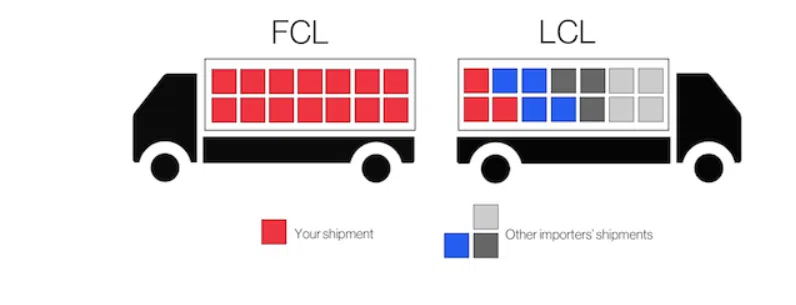Container Shipping
Container Shipping
What Is Container Shipping?
We now understand that container shipping involves loading goods onto standardised containers for seamless overseas and inland transportation. Let us now look at the journey of a container filled with goods from one place to another.
Different Stages in Shipping a Container
Container shipping involves a laborious process and documentation to ship freight from one destination to the other. Let us break the cycle into simple stages:
Order Placed
A client will place an order. The delivery process then involves both the manufacturer and a freight forwarder.
Goods are loaded onto warehouse, factory, or farm containers. They have to be packaged and labelled as per international standards.
The container is locked and sealed so the goods can remain secured inside the container.
Goods Loaded
Then they are loaded onto trucks or trains, which carry them to a port storage facility or a container freight station.
The containers are weighed and scanned at these facilities for contraband or illegal substances.
The rest of the journey depends on whether they must be shipped inland or overseas.
Loading on a Ship
In most cases, the freight forwarder will find the best route from point A to point B.
Depending on the buyer's needs, this could be either the most economical or the fastest.
Either way, the next step in the journey is loading the container onto a vessel that will carry it to the destination country.
Carriage of Goods at Sea
Adhering to strict ETA or the estimated time of arrival requirements and schedules of the container shipping industry, ships carry these containers from one country to another.
The master of the ship, along with the crew, is responsible for the safe carriage of all containers. They are highly trained professionals who comply with standards the International Maritime Organisation (IMO) sets.
Arrival at Destination and Unloading
Upon receiving clearance from the Port and Customs authority, the ship docks at the port of the destination country.
With the help of advanced machines called Gantry Cranes, Dockworkers unload ship cargo containers.
They load these containers onto trucks lined alongside the ships on the jetty.
Inland Transportation
Customs officials carefully analyse the documentation of each container before forwarding it to the container freight station.
Special trailers or railways carry these containers to their final destination depending on the distance from the port.
Final Delivery
Once the containers reach the warehouse or factory designated by the freight forwarder; they are dissembled.
Individual packages are prepared for delivery to the final destination decided by the buyer.
Types of Shipping Containers
What Are the Freight Options, INCOTERMS, and Documentation in Container Shipping?
Container freight is the amount of money charged for transporting the container. The freight depends on the amount of cargo the shipper wants inside the container for transportation. The type of freight rate also determines the shipping time of the consignment.
Let’s have a look at the two different types of container shipping freights.
Full Container Load (FCL) Container Shipping
- This means that your cargo occupies a full container load.
- FCL is used if your shipping load is more than 15 CBM in volume.
- For FCL, cargo must not exceed the maximum allowed weight of the container.
- The FCL container shipping freight rate is volatile.
- FCL freight rate is a fixed price and does not depend on the volume or weight of the cargo.
Less Than Container Load (LCL) Container Shipping
- This means that your cargo does not occupy the entire volume of the container.
- So, the remaining space in the container will be filled with other cargoes of different origins and destinations.
- LCL is used for shipments under 15 CBM in volume.
- LCL freight rates are more stable in comparison to FCL. However, LCL rates can be higher than FCL rates after a break-even point.
- LCL container shipping takes almost 4 days more than FCL on average. This is because it takes more time to assemble and disassemble the shipments.

- Container shipping International Commercial Terms (INCOTERMS) is a set of rules for international transit detailing responsibilities between suppliers and buyers. There are 11 Incoterms published by the International Chambers of Commerce (ICC). A 3-letter code represents each Incoterm.
- These changes came into effect on the 1st of January 2020 and are being used in 2022 as well.
- They will be in use until ICC publishes the next changes sometime in the future.


Comments
Post a Comment